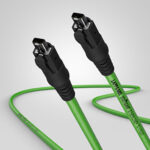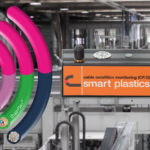Contributed by Frances Richards
Unshielded twisted pair (UTP) cable is a widely used data communication cable consisting of anywhere from two to 1800 unshielded twisted pairs of 100-ohm copper encased in an outer plastic jacket. This type of cable has no metallic shield, which keeps the diameter streamlined but offers minimal protection against electrical interference. That said, the twisted nature of UTP cable helps improve its immunity to electromagnetic interference (EMI) and other electrical noise. Due to the twisting, a portion of the noise signals go in one direction while another portion goes in the opposite direction, thereby reducing interference. In horizontal cables, four pairs of twisted cables within an outer jacket is the most widely used configuration. Although 24 AWG (American Wire Gauge) is the most common size, many other sizes are available including Category 6 UTP, a higher performance cable featuring larger 23 AWG copper wires. Backbone cables typically consist of increments of 25 twisted pairs. UTP cable is available in both solid and stranded conductor styles. Solid conductor UTP cables feature a single conducting wire and are considered stronger and easier to work with than their stranded counterparts. Due to their larger wires, solid conductor UTP cables offer superior electrical properties and work better than stranded versions for longer transmission runs.

UTP cables are most commonly used in local area networks (LANs) for applications such as computer networking, Ethernet networks, and telecommunications. These relatively inexpensive cables are often used in building automation and control systems, audio and security systems, and for voice, low-speed data, and high-speed data. Within industrial and plant floor environments, UTP cabling is often used to connect programmable logic controllers (PLCs), industrial Ethernet switches, and other network devices. UTP cables are also used extensively to connect field devices like sensors and actuators to fieldbus systems such as DeviceNet, Modbus, and Profibus. Another common application is access control systems, where UTP cable is used to connect control panels, readers, and other security system components in order to limit access to restricted areas. Benefits of UTP cable include its low cost compared to other options, widespread compatibility with most systems and devices, no need for grounding, and a smaller, more flexible size for easier installation than shielded cable.







Leave a Reply
You must be logged in to post a comment.